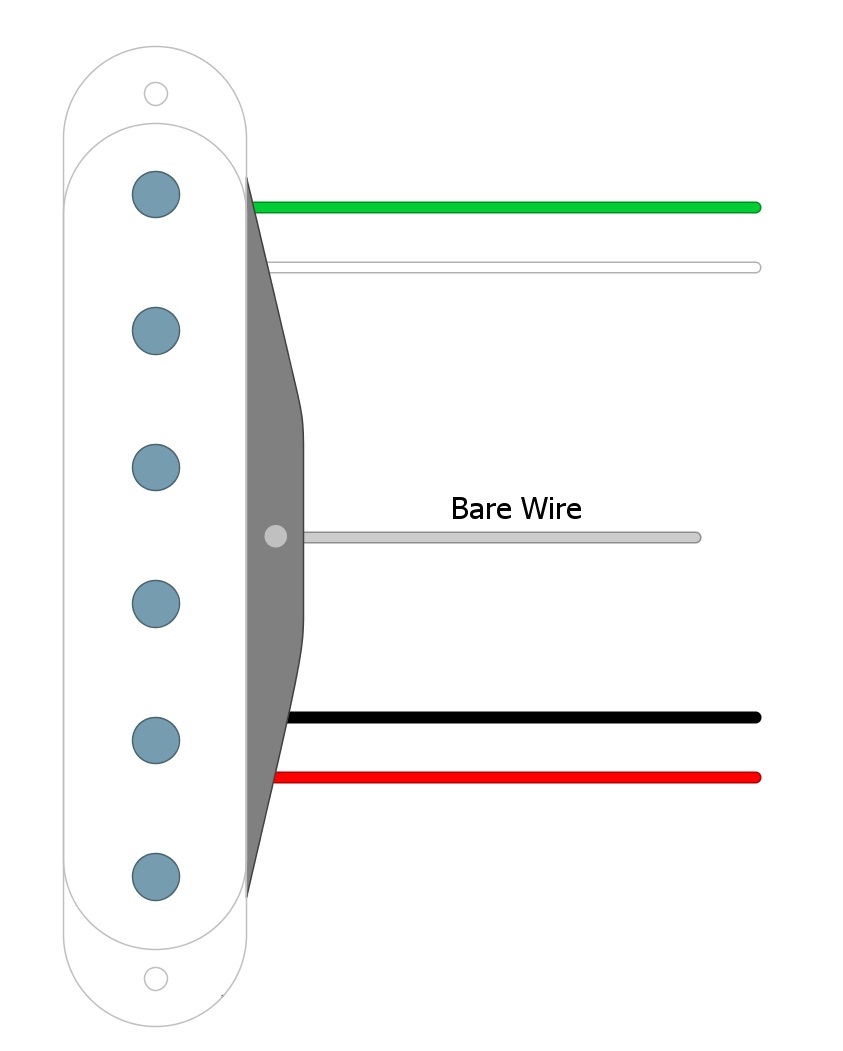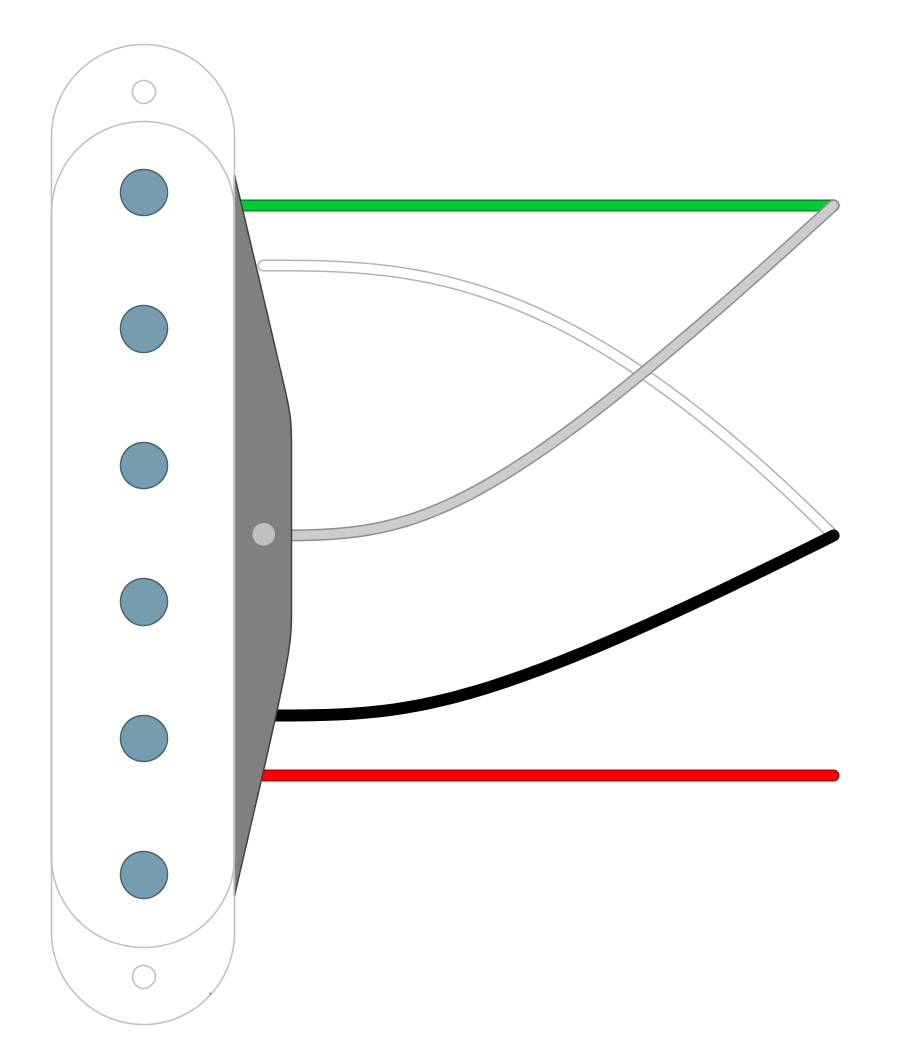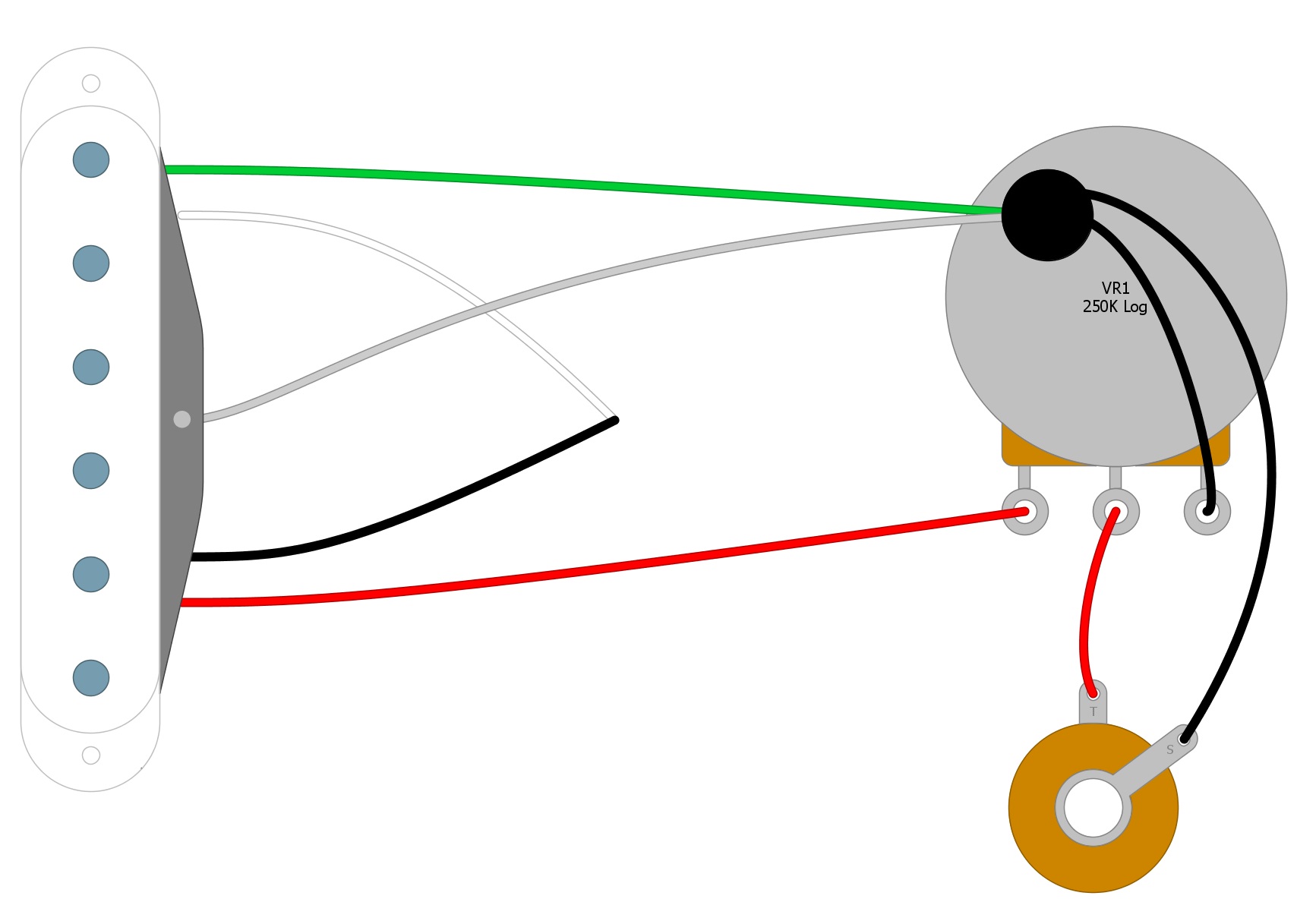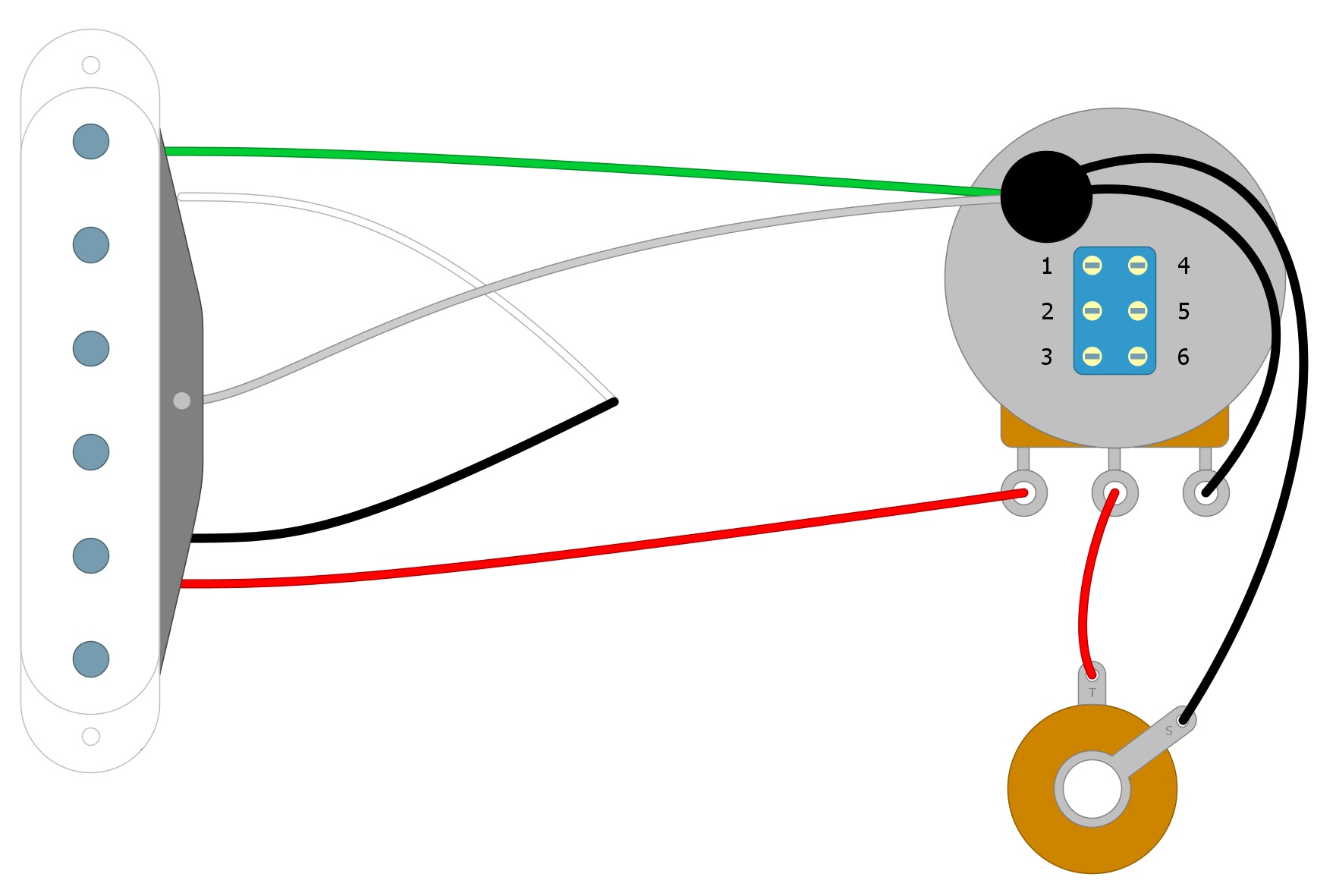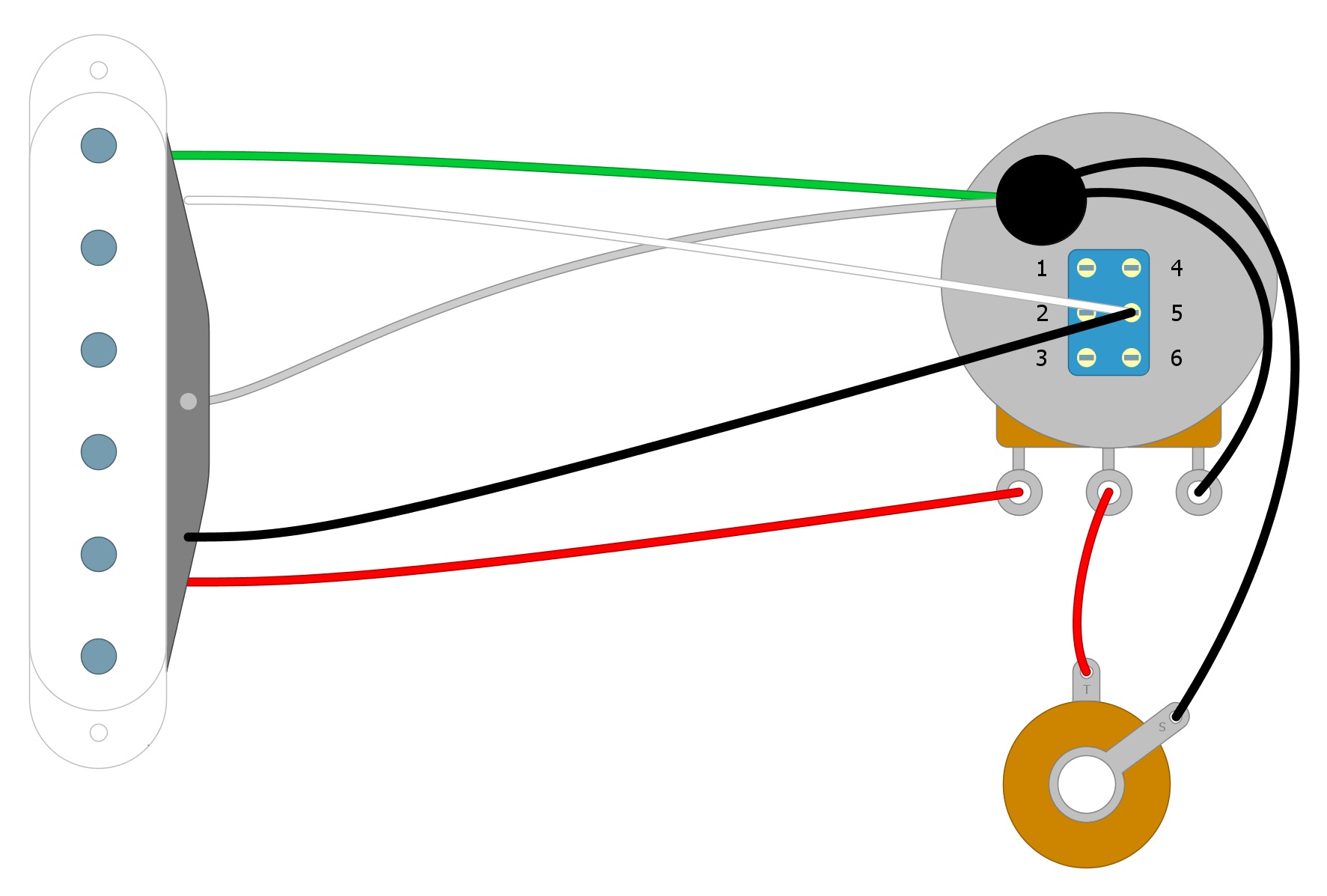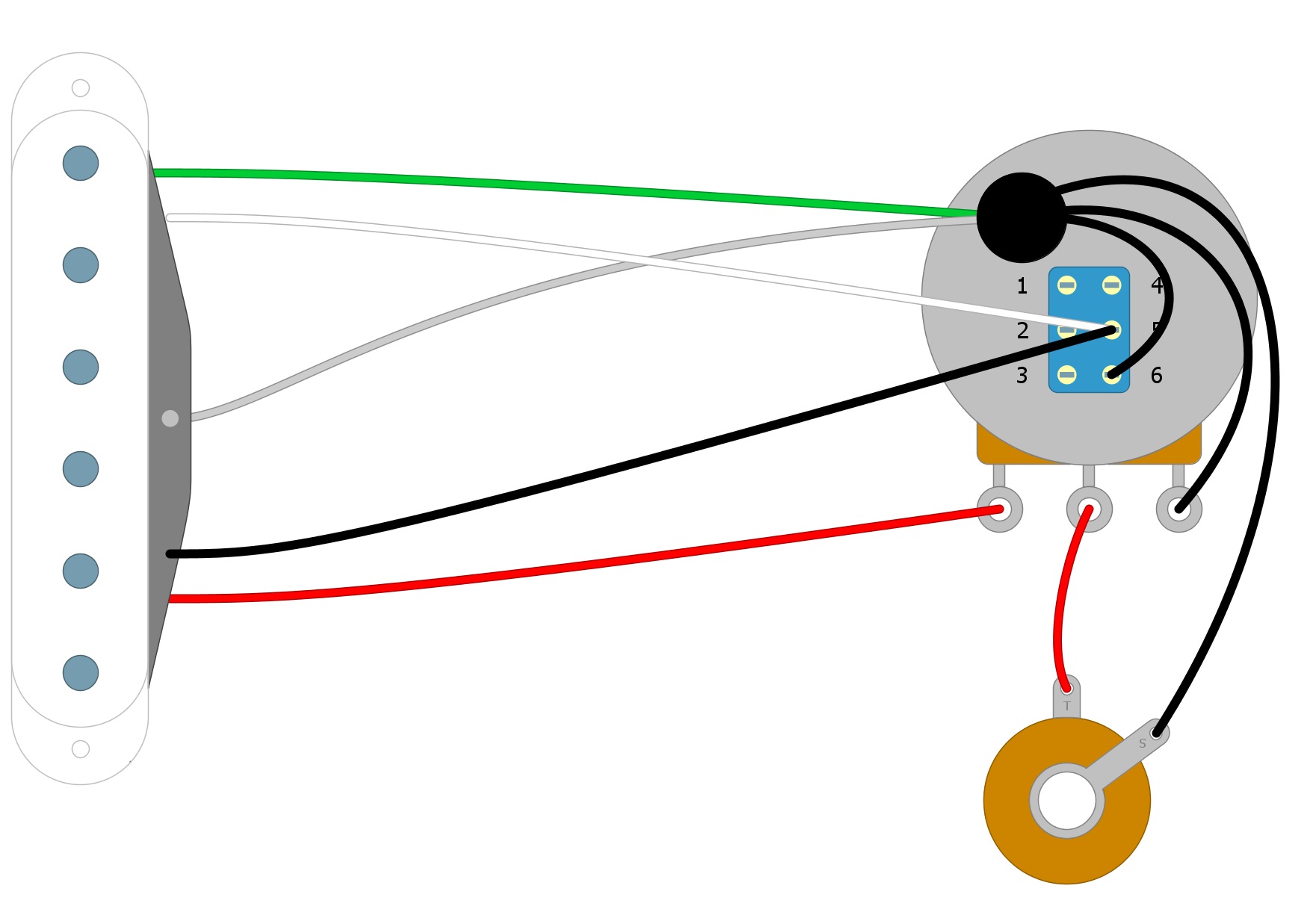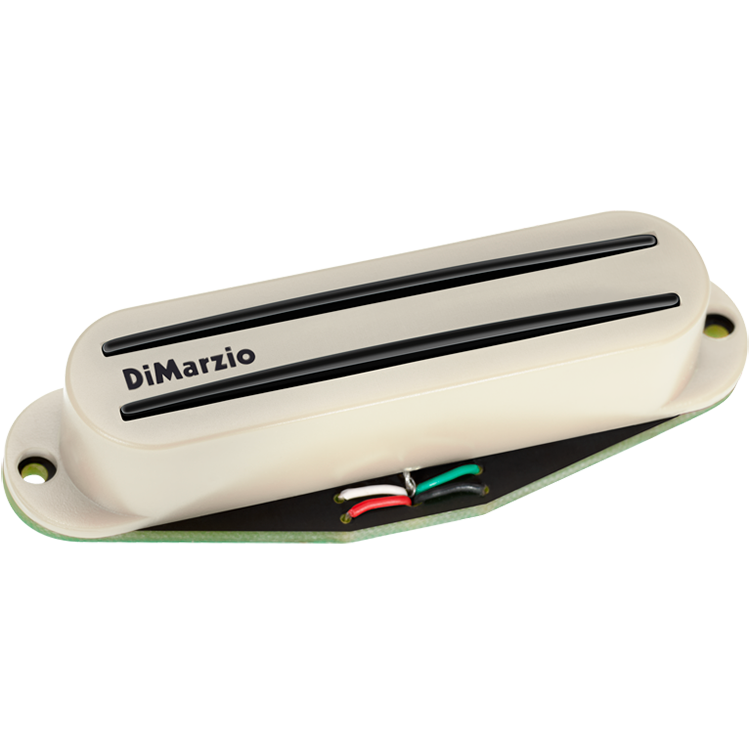
By Ed Malaker
Posted 02/19/2020
Doing a DiMarzio Fast Track 1 coil-splitting is a great way to get some new sounds from your guitar without doing any permanent damage. This modification can be accomplished using any humbucker pickup that has four colored wires and one bare wire, but we’re talking specifically about the Dimarzio Fast Track 1 in this post because of the color consistency of the wires. With other pickups, there is very little consistency in the wire colors.
The Dimarzio Fast Track 1
The Dimarzio Fast Track 1 is a mini-humbucker, which means that it fits into a single-coil space in your guitar. It uses a ceramic magnet for more clarity between strings, and it has a resistance value of 5.78K Ohm. This humbucker is said to have a balanced sound with more emphasis on the high-end frequencies to cut through the mix when playing fast passages of music.
What’s Coil-Splitting?
Coil-splitting is when you use a switch to deactivate one of the coils in your humbucker, giving you tones similar to a single-coil pickup.
The Switch
We will need a switch to turn one of the coils on and off. There are two primary types of switches that we usually use: the push-pull or the mini-toggle. For this article, we are going to use a push-pull pot because it allows our mod to be reversible, but you can use a toggle switch if you would like.
The downside to the push-pull pot is that the switching mechanism requires more space below the pot and some guitars may not have enough room. You will want to check your guitar before deciding which switch to use.
Toggle switches have an added challenge of where to install it on your guitar. Guitars that have pickguards with a lot of open space underneath are candidates for the toggle switch, because if you don’t like the modification you can change the pickguard.
The Push-Pull Switch
A push-pull pot is the same as a standard Volume or Tone control, but it has a switch built into it. You activate the switch by pulling the shaft of the pot out or pushing it in.
Installing the Fast Track 1
When coil-splitting a Fast Track 1, the Red and Black wires go to one of the coils, while the White and Green wires go to the other. The Bare wire is a shield wire that always connects to Ground. (Fig 1)
Fig 1
We begin wiring the pickup for standard use by soldering the Black and White wires together. We then use the Red wire as the Hot, and the Green as the Ground.
The Bare and Green wires are often soldered together before being connected to Ground (Fig 2).
Fig 2
Next, we install the pickup into the guitar. For this article, we are going to wire it as if it is the only pickup, and we are only going to be concerned with the Volume control and the Output jack. If you need step-by-step instructions, please take a look at our article on installing the Fast Track 1 (Fig 3).
Fig 3
Splitting The Pickup
Begin by changing the standard Volume pot to a Push-Pull type. The Push-Pull pot will be bulkier and have more connection tabs on it, but you should be able to see the three that were on the original. Wire these three tabs the same way as the original (Fig 4).
Fig 4
Now we will number the additional tabs on the Push-Pull pot, one through six (Fig 5).
Fig 5
Take the Black and White wires that we soldered together in Fig 2 and solder them to Tab 5 on the Push-Pull pot (Fig 6).
Fig 6
Solder a wire from Tab 6 to the back of the Volume pot.
It can be tricky to fit all of the Ground wires on the back of a Push-Pull pot. It might be easier to move your Ground wires to the Tone pot if you have one (Fig 7).
Fig 7
And that’s it… you’re finished!
If you find that the coil is splitting when the Volume knob is pushed-in instead of pulled-out, move the Ground wire from Tab 6 to Tab 4.
Summary
When pushed-in, your guitar signal travels through the first coil, starting at the Red wire and exiting through the Black wire.
We tied the Black to the beginning of the second coil, which is the White. Our signal continues through the second coil, exiting the Green wire.
When pulled out, your guitar signal travels through the first coil, starting at the Red wire and exiting through the Black, but then goes through the switch and our new Ground wire. Your guitar signal never goes through the second coil, because now your pickup is “split.”
For more articles on guitar electronics, visit humbuckersoup.com.

